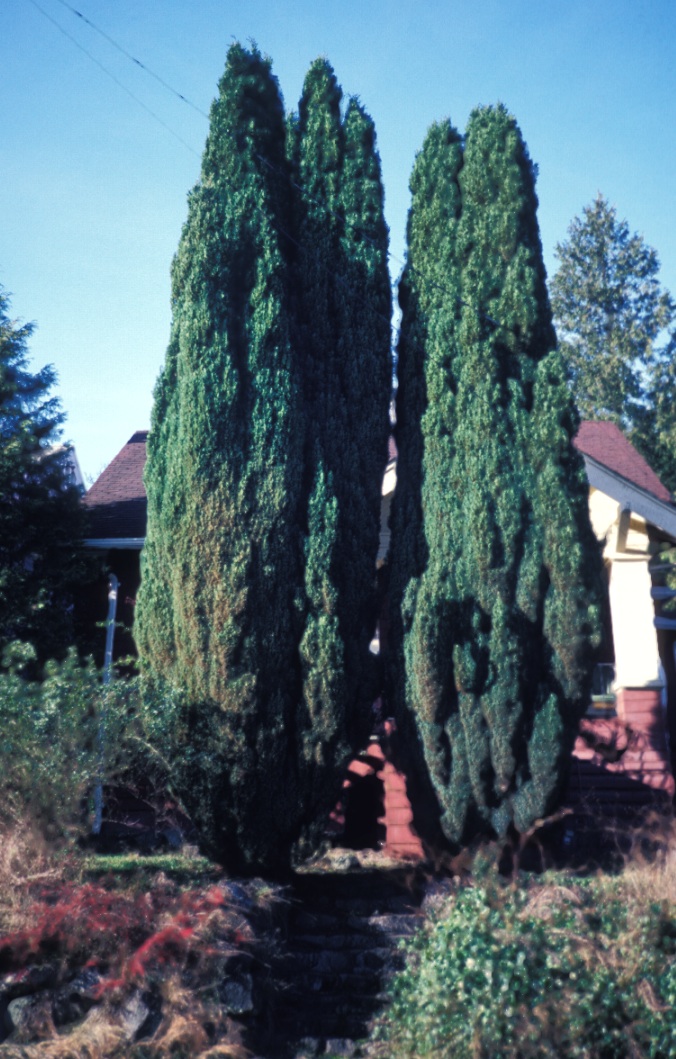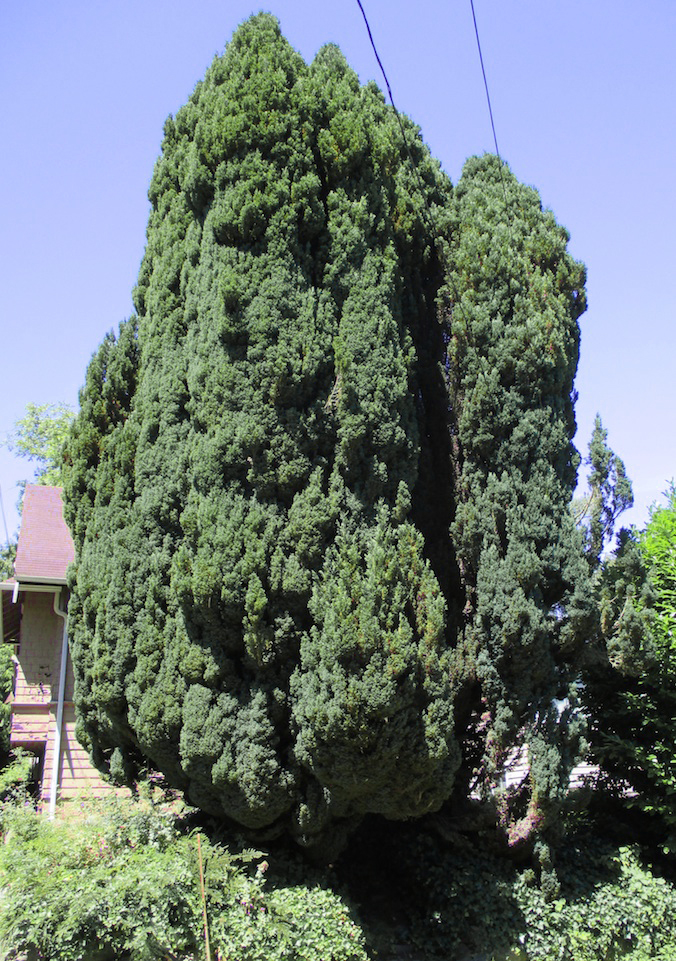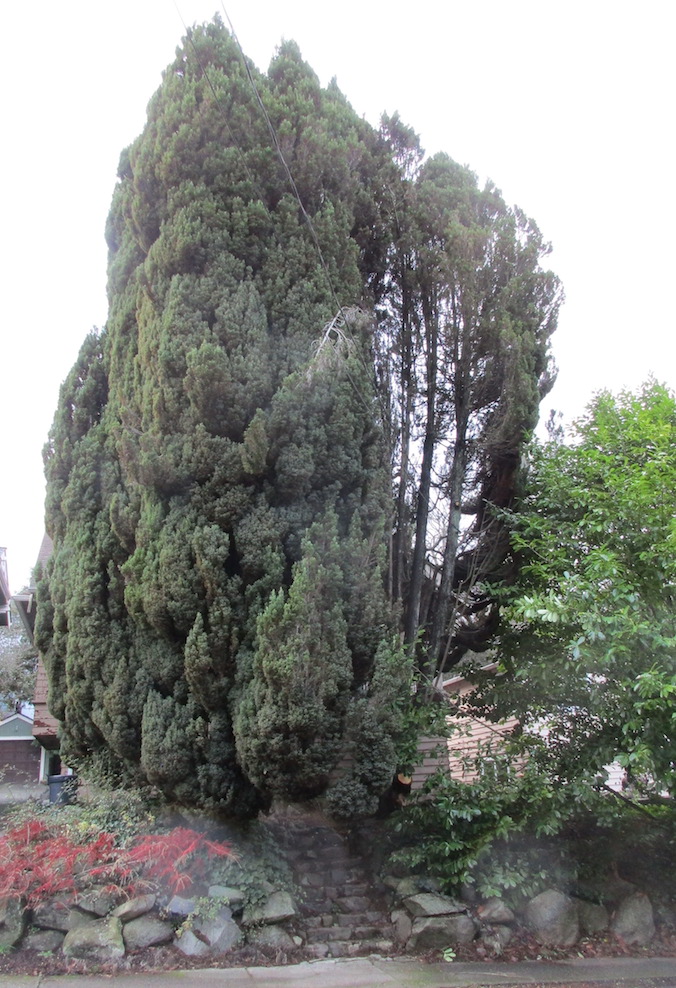| Of all earth's more than 600 coniferous species, the most variable is Lawson Cypress, also known as Port Orford Cedar. Its named cultivars are legion, and vary astonishingly in size, color, form and texture. All they share in common are their wood, and identical resinous-parsley foliage scent. |
| The first edition (1989) of my book Trees of Seattle cited examples of 14 tree-size cultivars planted within the city limits. The 2nd (2006) edition cited 18. My 1996 book, North American Landscape Trees, cited more than 50 treelike cultivars; numerous dwarf cultivars, and trees grown only in Europe, were excluded. Only one cultivar ( i.e., 'Ellwoodii') is being singled out in my present article. |
| Curiously, the natural range of the Lawson Cypress species is small: southwest Oregon and northwest California. But since the 1850s, its hundreds of cultivars have popped up in gardens as chance seedlings, witches brooms, and mutations. |
| I here share the story of 'Ellwoodii' --a cultivar notable for high mortality in Seattle. Of the ten locations of examples cited in the first edition of Trees of Seattle, only 3 were still alive by the time I was writing the 2nd edition. Those three, plus four new citations, are in the 2nd edition. But at the moment, at least 3 of the 7 cited in the 2nd edition are gone. I must check the one cited at Seattle Pacific University. |
| Why are they disappearing so frequently? Maybe they are unusually susceptible to a fatal root rot called Phytophthora. Perhaps they grow too large and are not amenable to attractive size-reduction pruning. |
| 'Ellwoodii' is juvenile-foliage form that originated about 1925 as a chance seedling in Swanmore Park Gardens, Bishop's Waltham, Southampton, Hampshire, England. It was named after George Ellwood (____ - 1949), the head gardener there. It was officially described by Murray Hornibrook in 1929. |
| The date of the introduction of 'Ellwoodii' to North American commerce is unknown, but by 1937 it was at Manten's nursery of British Columbia. It has been very commonly sold since the 1940s. A narrow oval in shape, it has exceedingly dense, prickly foliage of a bluish color, suggestive of a juniper. Adult foliage is possible but rare. It bears no cones. The tallest that I ever read about was: 52 feet in Burnaby, B.C., Canada (1992). Since at least the 1990s, it has been sold often in the U.S., around Christmas time, as a cute little container plant, sometimes called European Cypress. |
| The tallest I know in Seattle is 46 feet, one of a pair photographed below; it had been 34 feet when I first measured it in the 1980s. The two photos show 26 years of growth. (Then a later December 2019 photo.) |
Over the years, various 'Ellwoodii' sports or similar cultivars have been named, such as these 11:
|
| 'Ellwood's Empire' |
| 'Ellwood's Gold' |
| 'Ellwood's Gold Pillar' |
| 'Ellwood's Nymph' |
| Ellwood's PillarTM |
| 'Ellwood's Pgymy' |
| 'Ellwood's Silver' |
| 'Ellwood's Silver Threads' |
| 'Ellwood's Treasure' |
| 'Ellwood's White' |
'Ellwoodii Glauca'
Back
|

Ellwood Lawson CYPRESS January 1987; photo by ALJ
|

Ellwood Lawson CYPRESS June 2013 (46 feet tall); photo by ALJ
|

Ellwood Lawson CYPRESS December 2019 ; photo by ALJ
|

